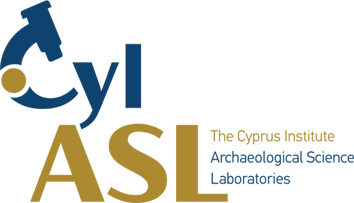
Mediterranean Island Life Modes: Foodwebs, Agricultural Practices and Social Complexity in Crete and Cyprus in the Bronze Age (MEDIS-FOOD, 2022 to 2024) is an interdisciplinary project focussing on the two larger islands of the eastern Mediterranean, similar in size and climate, Crete and Cyprus. The project is implemented under the programme of social cohesion ‘’Thalia 2021-2027’’ co- funded by the European Union, through the Research and Innovation Foundation of Cyprus Thallia 2021-2027-EXCELLENCE/0421/044 and led by Dr Evi Margaritis as PI. The project examines the origins of the complex societies of the Bronze Age, by analysing the agricultural practices, crop husbandry and land use of the period, alongside the production of wine and olive oil, which are products of transformative economic and social value. The fundamental question is how island communities use their land and how they survive by utilising their resources to the best extent. In contrast to prior approaches, the project employs a combination of new research questions and a multidisciplinary methodology in order to elucidate this important period in human agricultural and economic history. MEDIS-FOOD aims to advance research using a combination of techniques (archaeobotany, isotope analysis, phytolith analysis and theoretical models) in order to elucidate the complexity of the processes which led to the creation of the complex centres and agricultural systems in the eastern Mediterranean.
For this project, STARC collaborates with more than twenty foreign archaeological missions excavating in Crete and Cyprus, the Ministry of Culture of Greece and the Department of Antiquities of Cyprus.
One of the key objectives of the project is to generate and study a diverse dataset of archaeobotanical remains, all recovered using the same sampling and recovery protocols. Numerous assemblages have already been recovered from the sites of Gournia, Mochlos, Papadiokambos, Knossos and Chryssi in Crete and Paloures, Pyla, Sozomenos, Erimi and Erimi Pytharka and Kalavasos in Cyprus.
The novel aspect of MedisFood is its interdiscipliniarity. Apart from the study of the macrobotanical remains, being carried out by Dr K. Tsirtsi, we are also examining phytoliths and carrying out isotopic analysis. Phytoliths (from Greek “plant stone”) are rigid, microscopic structures made of silica found in some plant tissues and persisting after the decay of the plant. They can help in the reconstruction of the natural vegetation of the sites under study as well as elucidating the nature of the sources and the management of fuel, detecting whether the plants were brought onto a site as dung or for other uses such as medicine or basketry. Our PhD student Georgia Kasapidou is in charge of this work within the project and as part of her doctoral thesis. The project also employs the application of stable carbon and nitrogen isotope analyses (δ13C and δ15N) in order to investigate precipitation, water plant status and relative humidity along with manuring practices. The combined analyses will promote answers to key questions of changes in farming practices, economy, land use and water management. This work is being undertaken at the Dorothy Garrod Laboratory for isotope analysis of the McDonald Institute for Archaeological Research of the University of Cambridge.
The first results of the project suggest that after the Neolithic period, Cretan farmers began extending their agricultural practices to include the cultivation of new crop types, while Cypriot farmers continued to employ the same cultivation of crops as before. The inhabitants of both islands consumed fruits and nuts from a select range of trees, namely olive, grape and fig; almonds are also routinely recovered from Neolithic sites on Crete, but this nut is completely absent from Neolithic plant assemblages on Cyprus, and has only been recovered from two Early-Middle Bronze Age sites so far. With the exception of the rare almond addition, the tree and shrub data for Cyprus stays essentially the same from the Neolithic period through the Middle Bronze Age, in terms of both tree and shrub type and, also, of frequency of occurrence in archaeobotanical records. The same cannot be said of the plant data for Crete. After the Neolithic, the range of edible fruits and nuts recovered from Early and Middle Bronze Age sites noticeably diversifies. The archaeobotanical evidence for Cyprus suggests that the island’s inhabitants maintained, from the Neolithic period through the Middle Bronze Age, a mixed subsistence strategy consisting of crop agriculture coupled with a continuation of traditional hunting practices and gathering of wild plant resources. Indeed, new archaeobotanical results from the Middle Bronze Age settlement of Erimi provided little evidence for agricultural practices, but indicated the potential collection of wild plant resources for consumption purposes (Figure 1).

